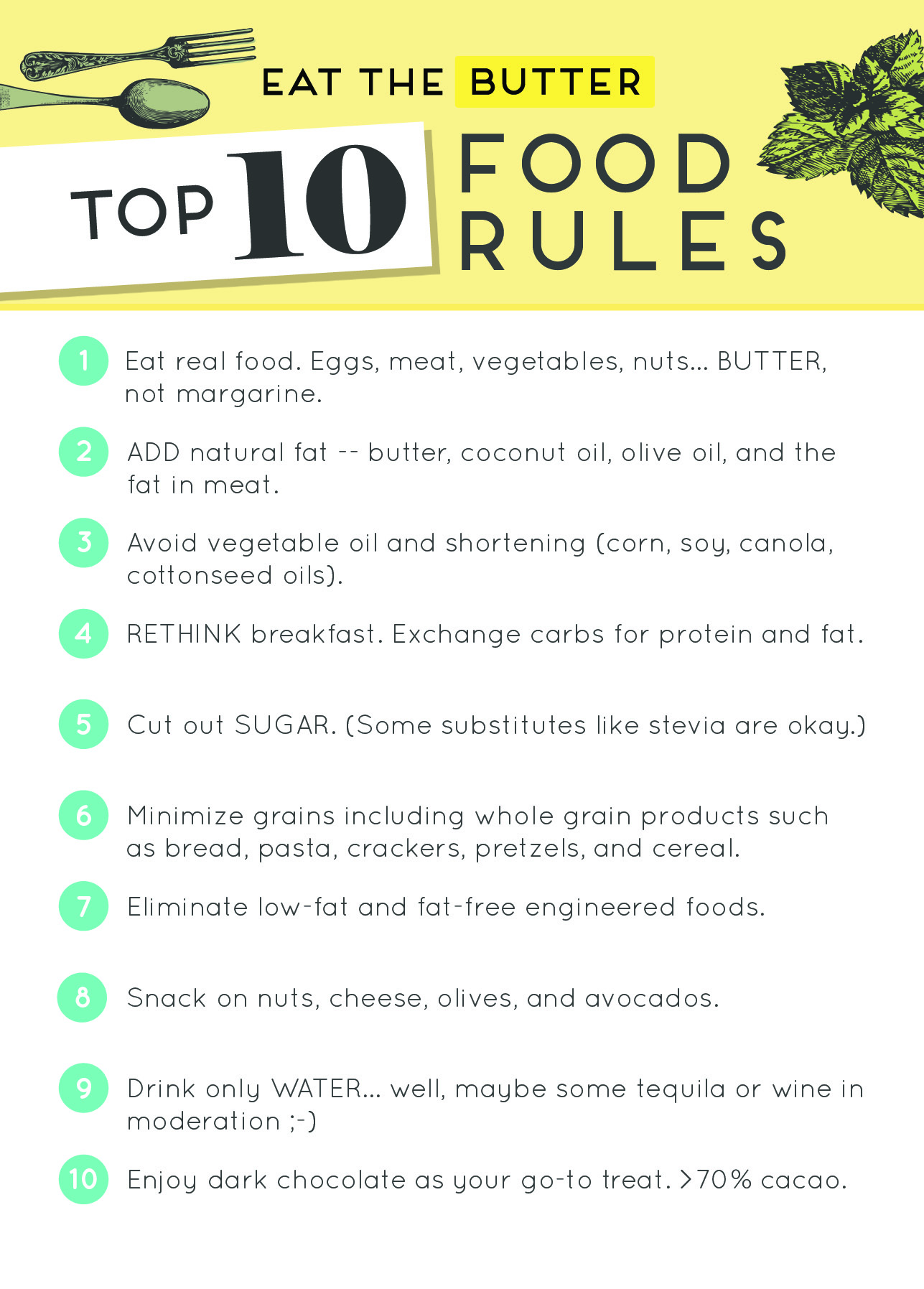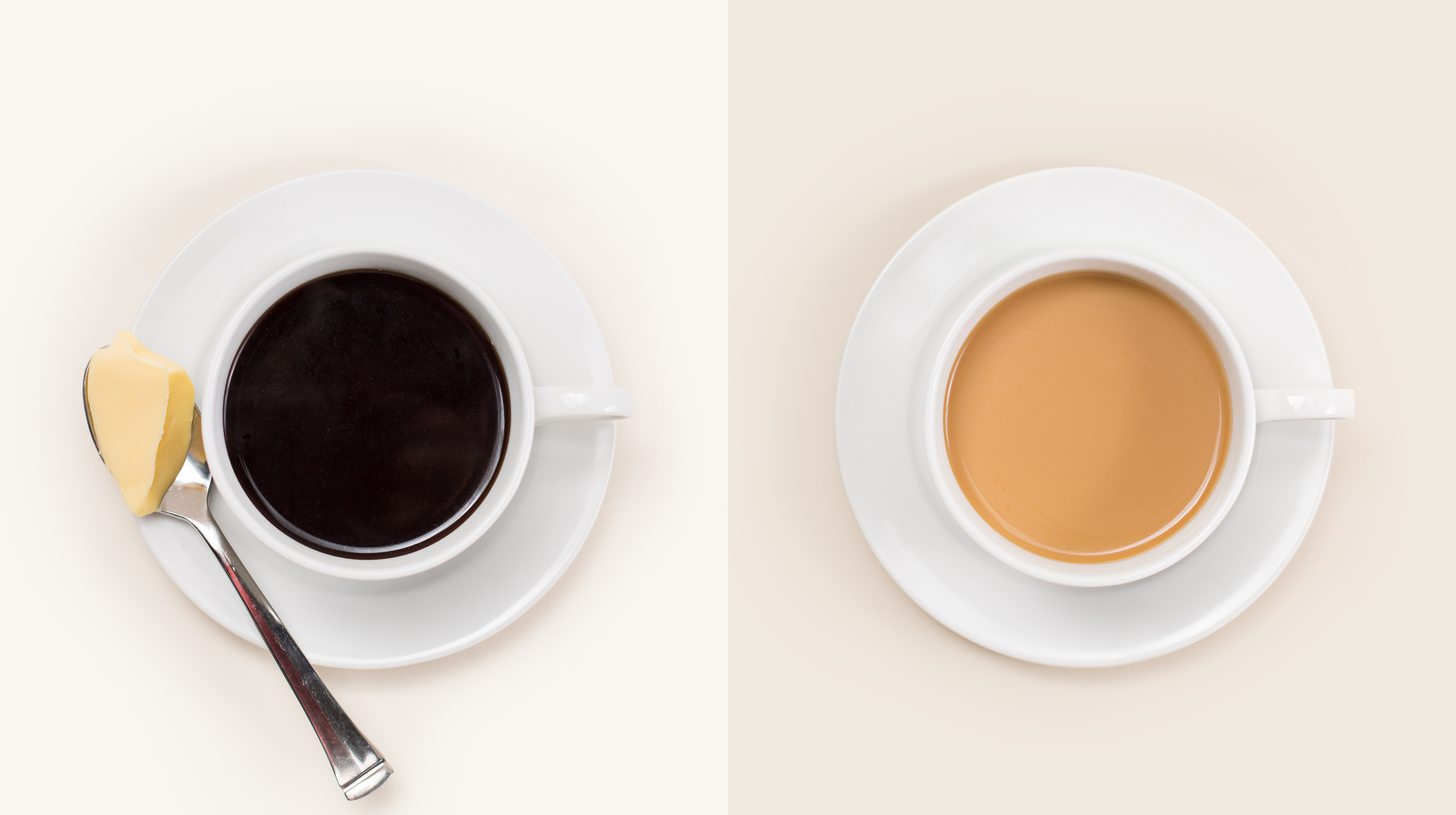New on the Eat the Butter blog... a practical guide for eating more fat! This post first appeared on the awesome low-carb website, Diet Doctor, but was written by ETB! It is perfect for anyone trying to enjoy more real, vintage fats for better health (and better food).
The Top 10 Ways to Eat More Fat
Flavorful, full-fat ingredients topped with creamy, satisfying sauces… Low-carb eating can be decadent! Fat is an amazing flavor enhancer – it makes everything taste better. And if you eat enough fat, it’s filling, too. Get ready for a new, luscious take on deliciousness!
Remember that a low-carb diet needs to be higher in fat, to make it satisfying. Don’t fear fat (natural fat is good for you). Don’t stay hungry. Add enough fat to feel satisfied after eating.
This can sometimes be a challenge for people who are not used to eating natural fat. Here are the top 10 tips on how to eat more fat – plus tips on HOW much fat you should aim for.
1. Start with whole, full-fat ingredients
Say goodbye to low-fat and fat-free products. Say good riddance to Egg Beaters, artificial creamers, and reduced-fat peanut butter. Banish any item labeled ‘light’ or ‘lite’ from your pantry and refrigerator.
Forget nonfat and low-fat dairy. (If your grocery store doesn’t carry plain, full-fat yogurt, buy the plain low-fat version and add back the fat by stirring in heavy cream, sour cream, or crème fraiche.)
Rethink your grocery list and stock your refrigerator and pantry with real whole food, including fat-rich options like avocados and eggs. Try to add natural fat rather than avoid it.
Fatty cuts of meat can be more flavorful, tender and inexpensive than leaner cuts. Salmon and sardines contain plenty of healthy fats and are a terrific addition, too. Invite these delicious items back onto your plate.
Learn more about low-carb, high-fat foods.
2. Cook with fat
No more limp steamed vegetables or dry chicken breasts. Cook your vegetables, meat, fish, and eggs in tasty natural fats like butter. Or the other ones listed under point 3, below.
Use as much as you need.
3. Use different fats for different flavors
Fats can change the flavor of a dish, which adds variety to your meals. For example, top green beans with butter for a comforting, familiar taste. Or, sauté them in peanut oil and drizzle with sesame oil for a delicious, Asian-inspired variation.
Experiment with new combinations to see what you like best. Stock several of these healthy fats in your fridge or pantry:
- butter
- lard, tallow, duck fat, and other animal fat (available at Fatworks)
- coconut oil
- olive oil
- avocado oil
- peanut oil
- other nut oils (macadamia, almond, walnut, etc.)
- sesame oil
4. Prepare low-carb recipes
Low-carb recipes are designed to deliver delicious meals, with plenty of fat built right into the ingredient list.
Click through for dozens of delicious low-carb recipes from Diet Doctor!
5. Top any dish with oil, dressing, sauces, or butter
Drizzle on oil… Pour on dressing… Spoon on Hollandaise… Ladle on flourless gravy… Dollop on sour cream… Spread on mayo… Melt on butter. Top off your dish with one of many fat-rich options.
What sounds delicious to you? For more, check out our recipes for low-carb dressings, condiments, dips and sauces.
6. Garnish with high-fat foods
Cheese. Avocados. Cured Meat. Olives. Seeds. Nuts. These whole-food toppings add flavor and nutrients, including plenty of fat, of course! Sprinkle some on almost any dish. Here are a few ideas to mix and match:
shredded parmesan | chunked blue cheese | grated cheddar
smoked gouda | balled buffalo mozzarella | crumbled feta
melted gruyere | baked brie | grilled halloumi
cubed avocado | mashed guacamole
diced bacon | sliced pancetta | ground sausage
minced black olives | stuffed green olives
sautéed pine nuts | roasted pepitas | toasted sesame seeds
slivered almonds | chopped macadamia nuts | spiced walnuts | flaked coconut
7. Ensure snacks contain fat
As a rule, it is best to avoid snacks, but if you are too hungry to make it comfortably to the next meal, reach for a real-food snack with plenty of fat. Obvious choices include cheese, nuts, and hard boiled eggs.
For more ideas, check out our guide to low-carb snacks.
8. Add a cheese course
Cheese is a simple addition to any meal. It works as an appetizer. It works as a topping. It works as a dessert. If you need a lot of calories, cheese can help you feel satisfied.
Top low-carb recipes with cheese.
9. Blend fat into coffee or tea
Melting butter or coconut oil into coffee or tea is quick and easy. Pouring in heavy whipping cream works, too. This warm and comforting shot of fat can replace breakfast, stave off hunger between meals, or substitute for dessert if you aren’t quite full.
Use this tool wisely; for some people, too much can stall weight loss or spike cholesterol. Especially if you drink it despite not being hungry, adding tons of fuel you don’t need. This is a potent tool – use it wisely.
Bulletproof coffee recipe. Or, a personal favorite: keto hot chocolate.
10. Consider a fat bomb for dessert
Our first advice is to skip dessert. If you do decide to treat yourself, look for recipes that are heavy in fat and low in sugar and artificial sweeteners. Unsweetened heavy whipped cream on raspberries is a perfect choice. Here are a few more of our favorites:
Low-carb snack and dessert recipes
How Much Fat Should You Eat?
Are you hungry? Don’t be. When you cut back on carbohydrates, the trick is to fuel your energy needs with fat instead. Eat enough fat at your meals so that you are not hungry for at least 5 hours.
Shoot for feeling pleasantly satisfied, but not overfed. After dinner, you should make it easily through the night – 12 hours without hunger (if not more). Work towards finding this balance.
Below are a few refinements to this advice, if you really want to maximize the effectiveness of your low-carb diet. Most people never care about these things and they do well anyway. But for bonus points check out these five extra refinements.
1. Ease into fat adaption
When you begin your low-carb journey, you may find some high-fat foods taste ‘too rich.’ Be patient. As you transition to your new way of eating, both your body and your taste buds will adjust. Work up to eating enough fat to avoid hunger and allow your body time (at least a month) to settle into its new pattern of burning fat instead of carbohydrates.
When you find that balance, hunger will diminish as your body enjoys easy access to the body’s fat stores that were locked away by a high-carb diet.
2. Dial it back for weight loss
Hoping to lose weight? If the answer is yes, once you are at ease with your low-carb diet, experiment with reducing the extra fat you add to meals.
When hungry, always opt for additional fat rather than cheating on your low-carb plan. Eat just enough to avoid hunger – let your body burn its internal fat stores rather than that extra pat of butter. This will accelerate weight loss.
But don’t go too far – when hungry, always opt for additional fat rather than cheating on your low-carb plan.
3. Add fat as needed for maintenance
Once you reach your goal weight, you no longer have the internal fat stores necessary to fuel an energy shortfall day after day. Tune into your body’s hunger signals. Now is the time to gradually add more fat to your diet until you find the satisfying balance of hunger-free weight maintenance.
4. Eat an adequate amount of protein
Part of the trick of minimizing hunger is making sure you eat the right amount of protein. For most people, this happens naturally. But, if you can’t beat your hunger by adding fat, or if you are eating very low-carb but stalled in weight loss, take a look at how much protein you are eating.
How much is enough? Individual needs vary, but about 1 gram of protein per kilogram of bodyweight (each day) may be optimal for weight loss. You may need more if you are active though, especially if lifting weights and building muscle.
Fat makes life tastier, easier, healthier, and more satisfying. So add the fat! Mmmm…





































